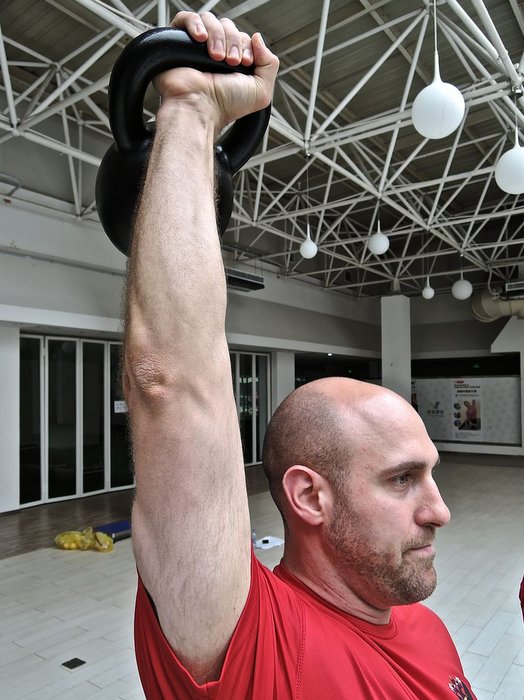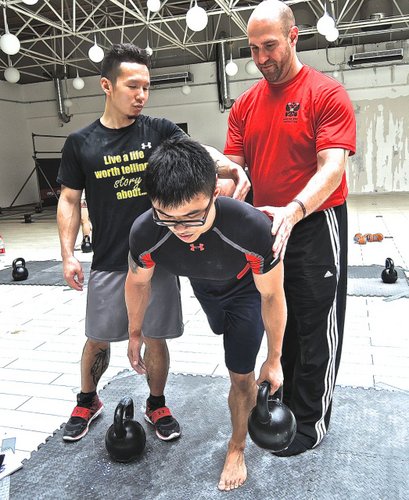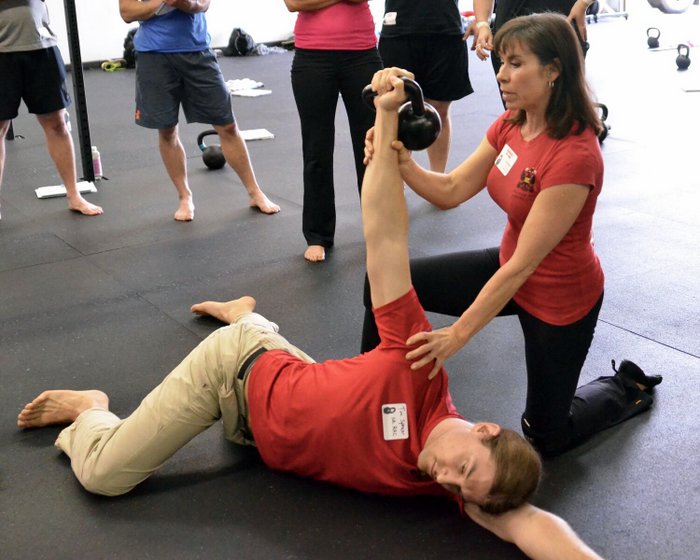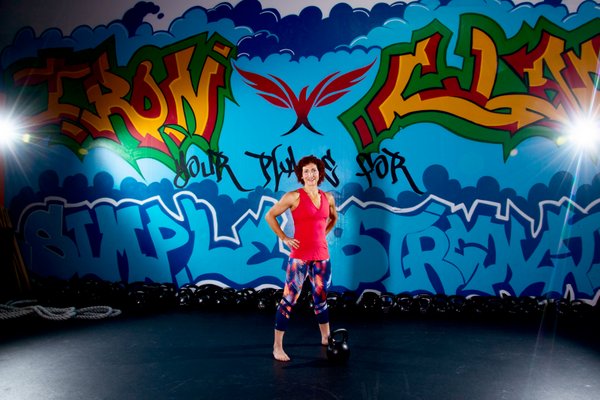
My RKC workshop was in April 2009, and I didn’t pass at the workshop due to a failed snatch test. I submitted a video one week later to earn my RKC title. I recently stumbled across that fateful video and of course, I watched it.
I watched it with a little bit of shock and awe at the poor technique I displayed. I also watched it with a lot of pride. Pride for the hard work I have put in to improve my technique since then and pride for all I have accomplished over the years.
When I first learned the snatch, it was in the days of first learning the high pull. This caused me to have a very significant corkscrew. I worked and worked at fixing this corkscrew before attending the RKC to no avail, and it was one of the biggest worries I had going in to the workshop. It wasn’t the typical worry of not completing the reps, my worry was all about the technique.
I did improve my technique at my RKC workshop, but I still had some of that darn corkscrew. At the time, while not ideal, it was still considered passable technique. I kept plugging away at the technique, but that corkscrew still remained.
I eventually sought out some additional instruction, which helped quite a bit. I also started watching videos of other instructors doing the snatch. I watched the timing very intently, along with the arm position and the path the kettlebell took. I noticed that when they snatched, you could see the bottom of the kettlebell as it flipped over and it looked so smooth and effortless. When I snatched with the corkscrew, my arm was turning out the side, therefore the bottom of the kettlebell was turning out to the side. It also looked anything but smooth and effortless. It certainly felt like a lot more effort too.
I took all of these visual and verbal cues and turned them inward, so I could feel it and visualize what it should look like. I snatched in front of the mirror because at the time I didn’t have a way to video myself. The short story is that it worked! I was finally able to snatch without a corkscrew. However…
I still had work to do to improve my technique. I was now keeping my arm a bit too straight and casting the kettlebell out a bit too much. More training and more work ahead, but I took it all in and worked hard because I was determined to get better. Being a type-A perfectionist and a Capricorn served me well in this case. Not only would this extra work help me get better, but it would help me help my students.
I later assisted at an RKC for the first time and it was the first time with the new RKC. When I tested my requirements for Keira Newton, she gave me a few additional tips that added to the improvements I had already made.
Then I witnessed how we now teach the snatch from the top down. I was amazed at its simplicity, yet it was extremely effective. It seemed so much easier to learn and to teach others this way. I even told the participants how lucky I thought they were to now be taught this way.
Each of these improvements I learned and made over the years has helped make the snatch feel more fluid yet more powerful. My big a-ha with the cumulative effects of each of these improvements is in how much it has helped the efficiency in my movements. I was expending so much additional energy in the way I was snatching before. Watching that video from 2009 now, I can see that so clearly. It honestly looks painful to me.
My moral of this story is that our journey of learning and improving doesn’t stop once we earn our RKC. The RKC helps give us our foundation and our starting point for teaching. But there is so much more to learn and so much more to do after we become an RKC. What makes us really good instructors is our quest to always do more, always be better and always serve our students.
Keeping our certification current is not about paying money to re-certify and keep the letters behind our name. We must improve our own skills, which in turn helps make us better instructors. We can only help our students improve when we help ourselves improve. We can also better help our students when we have access to the most current teaching standards, combined with all the tools we learned before.
If I had never learned the current way of teaching the snatch and if I had never corrected my own technique, I certainly could have still taught people. But I believe that I wouldn’t be serving my students to the best of my ability. That is, after all, the reason why we seek out those 3 letters in the first place, right? Never give up, never stop trying to improve and don’t let the journey end with the letters.
****
Shari Wagner, RKC-II, CK-FMS owns Iron Clad Fitness in Denver, Colorado. She can be contacted through her website at IronCladFit.com, email: info@ironcladfit.com or by phone 720-900-4766. Follow her on Facebook: facebook.com/IronCladFitness and Twitter: twitter.com/IronCladFitness.
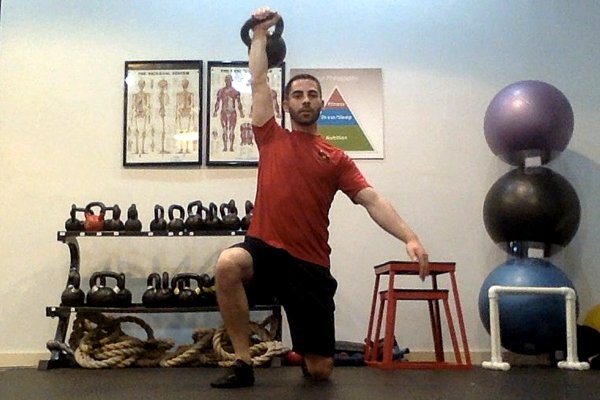
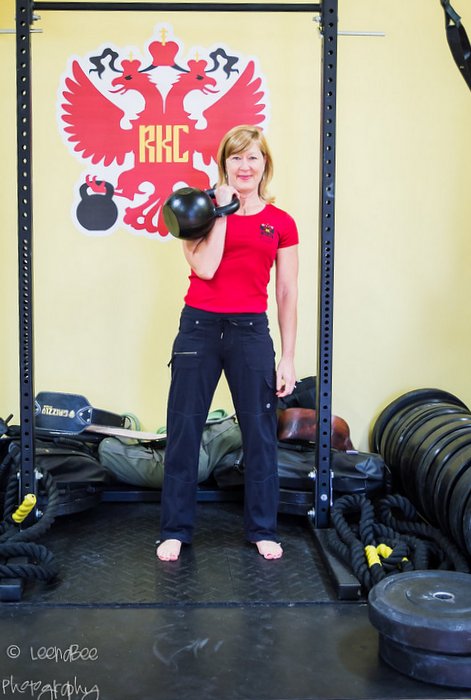
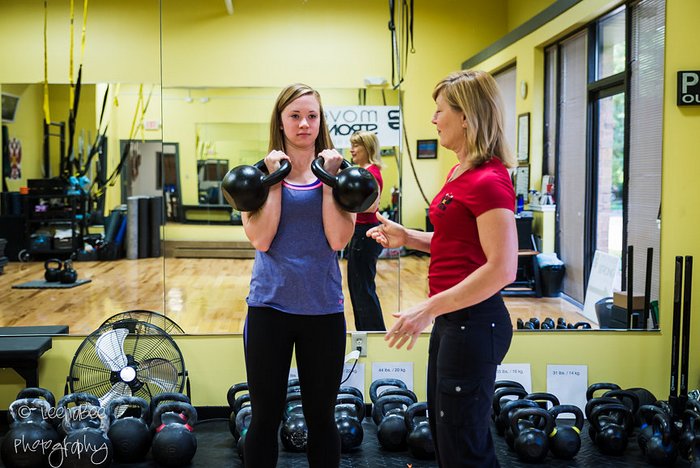
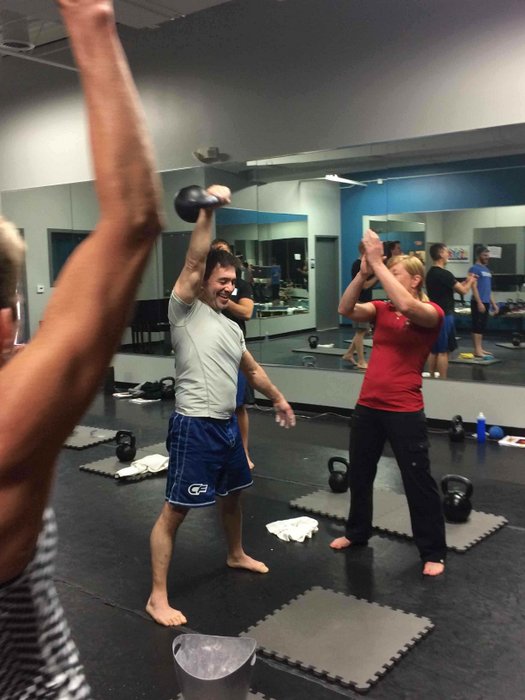
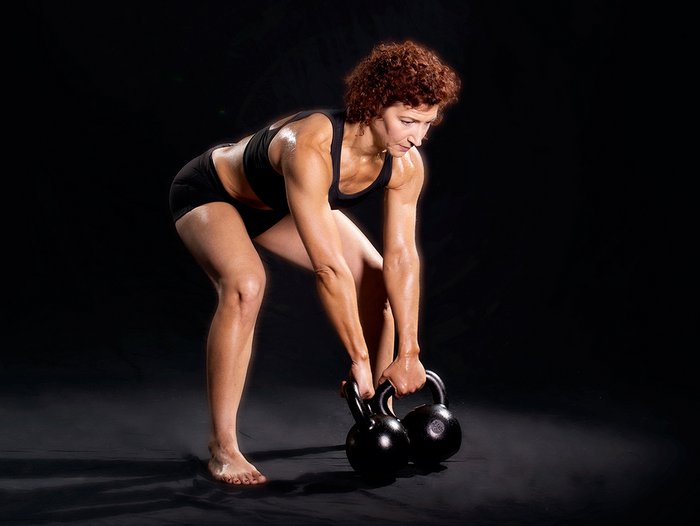
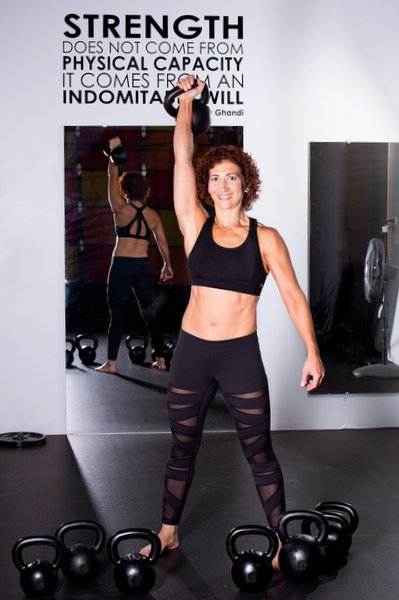
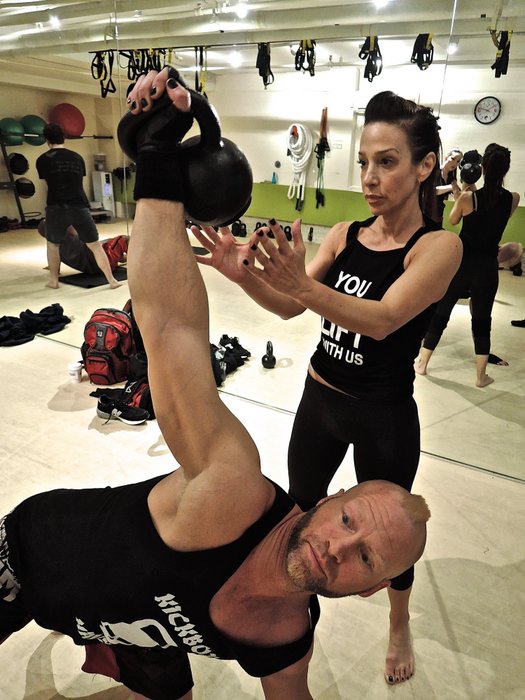
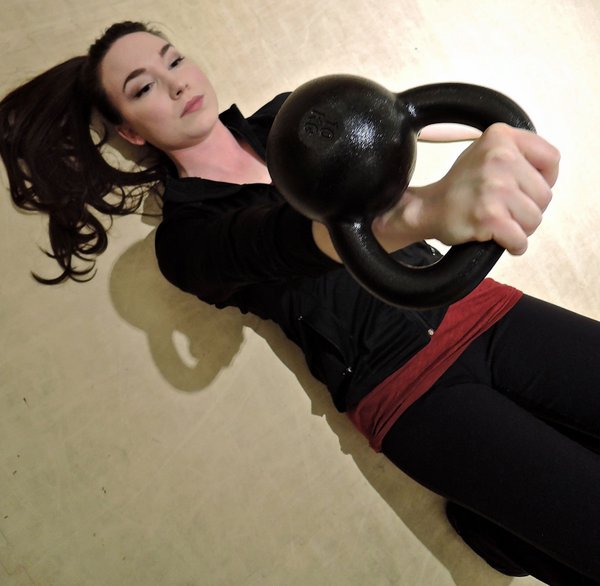
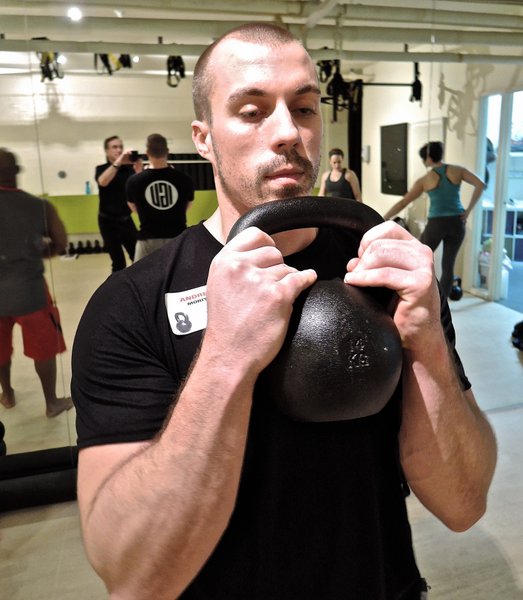
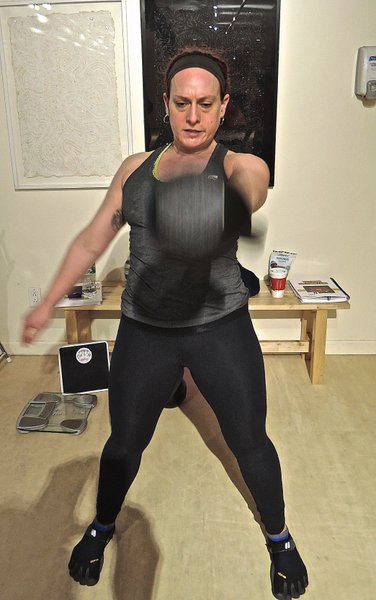

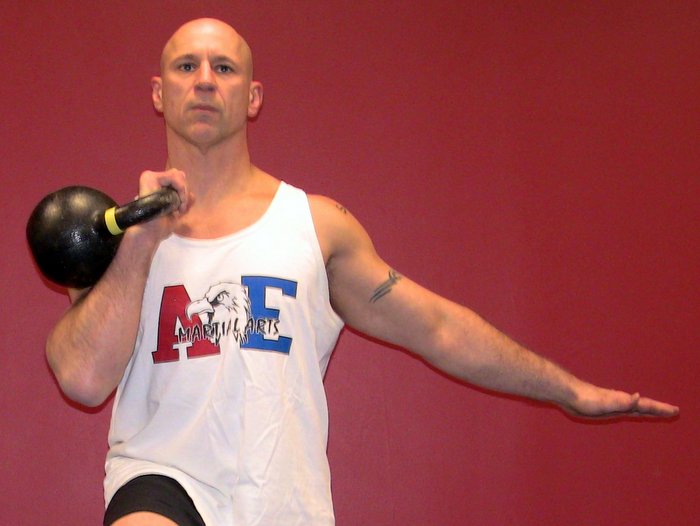
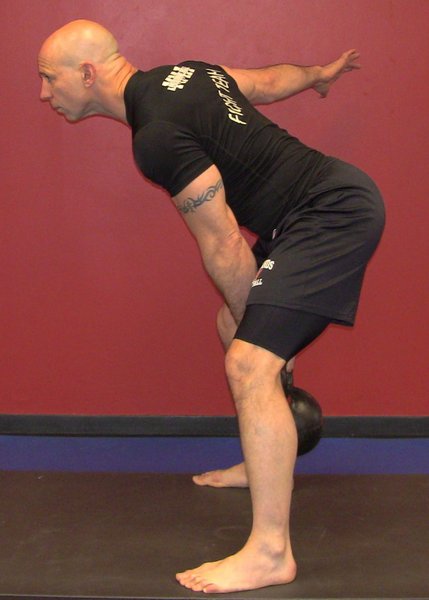 Perform these as one big complex, moving from one exercise to the next without rest. Take a one minute rest period between the rotations. This is a great method for prepping for your
Perform these as one big complex, moving from one exercise to the next without rest. Take a one minute rest period between the rotations. This is a great method for prepping for your 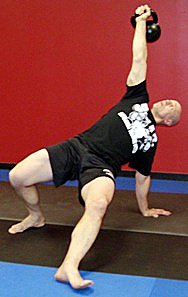 Get-Up Pyramid. Begin with your snatch test size kettlebell. Perform 5 reps on each side. Move up to the next sized kettlebell and do 4 reps on each side. Repeat this with 3 reps at with a heavier kettlebell, 2 reps with the next heavier kettlebell and then one rep with the heaviest kettlebell you are able to use. Once you’ve gone up, go down repeating the sequence in reverse. This will yield 60 repetitions. If you are not able to increase on every set, use good judgment and only use a kettlebell that you are able to safely perform the get-ups with proper form.
Get-Up Pyramid. Begin with your snatch test size kettlebell. Perform 5 reps on each side. Move up to the next sized kettlebell and do 4 reps on each side. Repeat this with 3 reps at with a heavier kettlebell, 2 reps with the next heavier kettlebell and then one rep with the heaviest kettlebell you are able to use. Once you’ve gone up, go down repeating the sequence in reverse. This will yield 60 repetitions. If you are not able to increase on every set, use good judgment and only use a kettlebell that you are able to safely perform the get-ups with proper form.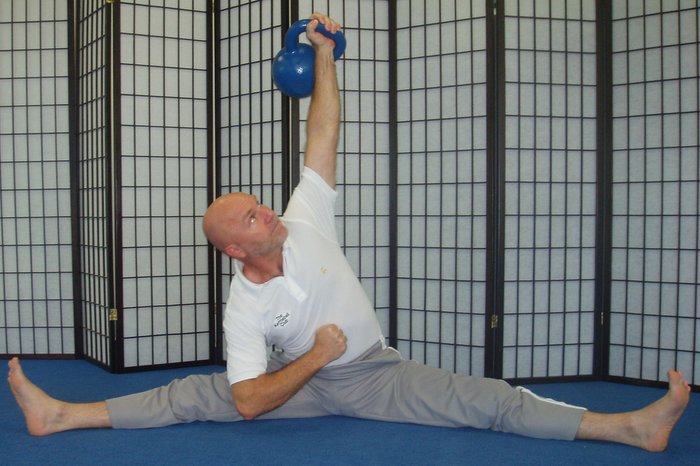
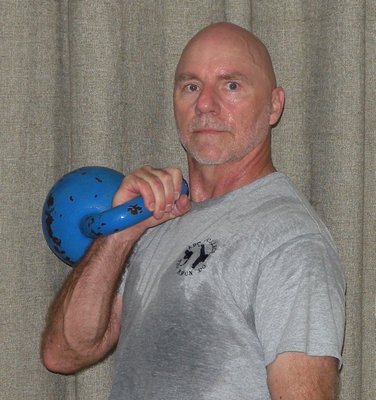 Having a genuine love of
Having a genuine love of  Seek out a physical activity that is enjoyable, and therefore sustainable. Perhaps kettlebell training is such an activity. Kettlebell training can be done in a group class setting. This will allow you to share energy with others in the class. Spending time with other like-minded people can take an exercise program out of the “have to” category and turn it into something you want to do.
Seek out a physical activity that is enjoyable, and therefore sustainable. Perhaps kettlebell training is such an activity. Kettlebell training can be done in a group class setting. This will allow you to share energy with others in the class. Spending time with other like-minded people can take an exercise program out of the “have to” category and turn it into something you want to do.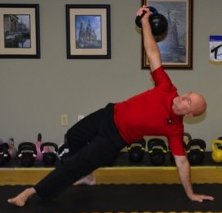 Firstly, the
Firstly, the 